 |
 RTE Radio One - 729 khz from Cork, Ireland |
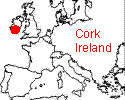 |
This
is one of the few Medium Wave transmitters operating in Ireland. It was
established around 1970 to provide an improved RTE signal in Cork City
and
to allow for a local version of RTE Radio One to be broadcast for a few
hours each day. The 10 kilowatt transmitter was located in what was
then a remote area called Ballinure which was located alongside Lough
Mahon.
Location
Photos of the mast
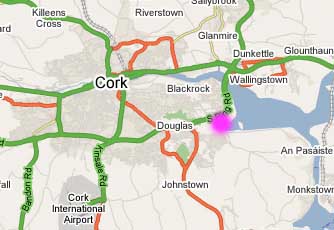 |
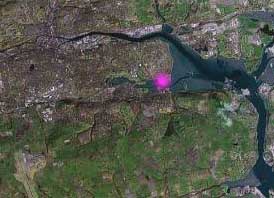 |
| Location
of RTE transmitter in Mahon, South East of Cork City |
Satellite
photo showing inner harbour and Lough Mahon to the East |
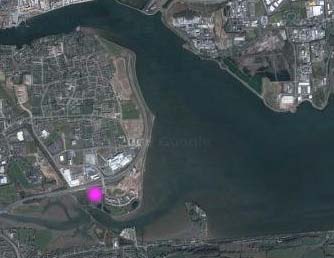 |
 |
| Closer
view showing Blackrock (top half) and Mahon (bottom half). You can make
out where the South link road
passes the RTE site. To the South of the mast is the Douglas Estuary
which no doubt helps to improve the radiated signal. |
On
this close up, you are looking down on top of the 120 metre high mast.
You can see it's shadow going towards the top of the picture and
crossing the road. Also shown is the small dam which fills at every
high tide and ensures that there is always water close to the base of
the mast. This dam is now part of an amenity walkway which passes the
RTE site. |
Photos of the mast
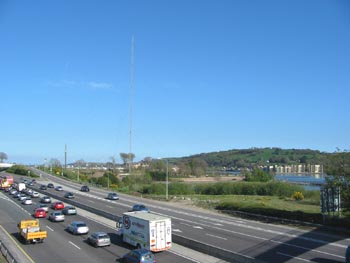 |
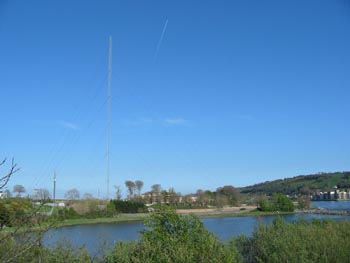 |
| When
this mast was first erected, it was in a very quiet area surrounded by
fields. Today, the City of Cork has expanded and now the mast is now
alongside the major housing development of Jacob's Island and the Mahon
Point shopping centre. Photo shows the rush hour traffic on the South link road driving past the mast and heading for the Lee tunnel. |
This
photo shows the pond at the base of the mast. |
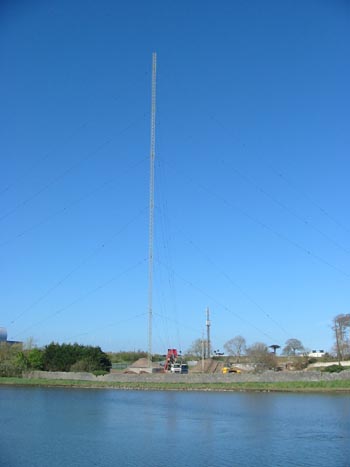 |
 |
| Closer
view from the dam which keeps the water at a high level in the pond. |
April
2007 - View from the adjacent walkway showing some development work
going on. |


